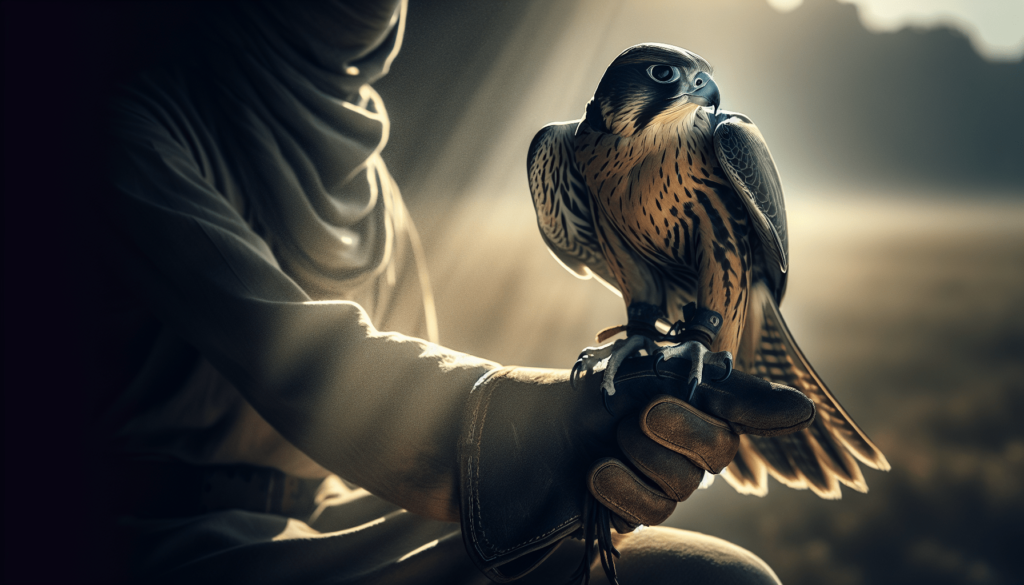Have You Ever Wondered About Falconry?
Have you ever been curious about the ancient art of falconry? Learning about this fascinating practice can provide a deeper appreciation for the bond between humans and birds of prey.

What is Falconry?
Falconry, also known as hawking, is a traditional practice of training birds of prey to hunt. This ancient art dates back thousands of years and has been practiced in various cultures around the world.
Falconry involves using trained birds, such as falcons, hawks, or eagles, to hunt wild game for food. The birds are carefully trained to return to their handlers after a successful hunt, making falconry a partnership between human and bird.
The History of Falconry
Falconry has a rich history that spans many centuries and cultures. As one of the oldest hunting sports, it has been practiced by kings, emperors, and nobility as a status symbol and a way to showcase their wealth and power.
In medieval Europe, falconry was considered a sport of royalty and was a highly regarded pastime among the aristocracy. Falcons were prized for their speed and agility, making them the preferred hunting bird for many falconers.
Types of Raptors Used in Falconry
There are several types of raptors that are commonly used in falconry, each with its own unique characteristics and hunting abilities. Here are some of the most popular bird species used in falconry:
| Bird Species | Characteristics |
|---|---|
| Peregrine Falcon | Known for their incredible speed and agility, peregrine falcons are highly prized for their hunting abilities. They are often used in falconry to hunt birds in flight. |
| Harris’s Hawk | Harris’s hawks are known for their social nature, making them easy to train and work with. They are often used in falconry to hunt rabbits and other small game. |
| Goshawk | Goshawks are powerful and agile birds of prey that are skilled hunters of medium-sized animals. They are highly sought after by experienced falconers. |
Training and Care of Falconry Birds
Training a bird of prey for falconry requires patience, skill, and dedication. It is essential to establish a strong bond with the bird through positive reinforcement and trust-building exercises.
Each bird species has specific training requirements, so it is crucial to work with an experienced falconer who can provide guidance and support throughout the training process. Proper care and nutrition are also essential to ensure the bird’s well-being and hunting success.

Equipment Used in Falconry
Falconry requires specialized equipment to ensure the safety and effectiveness of the bird during hunts. Some essential gear used in falconry includes:
Falconry Gloves
Falconry gloves are made of thick leather to protect the handler’s hands from the bird’s sharp talons. These gloves provide a barrier between the handler and the bird, allowing for safe handling and training.
Jesses and Anklets
Jesses are leather straps that are attached to the bird’s legs to provide a means of control during training and hunting. Anklets are leather cuffs that are used to secure the jesses to the bird’s legs. Together, they help the falconer guide and manage the bird in the field.
Lure
A lure is a decoy used to train the bird to return to the falconer after a successful hunt. By using a lure, the falconer can reinforce positive behavior and encourage the bird to come back after catching its prey.
Ethics and Conservation in Falconry
As a traditional hunting practice, falconry raises ethical considerations regarding the treatment and welfare of the birds involved. It is important for falconers to prioritize the well-being of their birds and adhere to ethical standards in their training and hunting practices.
Conservation is also a key aspect of falconry, as many raptor species are threatened or endangered due to habitat loss and human activities. Falconers play a crucial role in conservation efforts by raising awareness and supporting conservation initiatives to protect these magnificent birds of prey.
Falconry Today
Today, falconry continues to be practiced by enthusiasts around the world as a way to connect with nature, preserve ancient traditions, and showcase the beauty and intelligence of birds of prey. It is a rewarding and challenging pursuit that requires dedication, skill, and respect for the birds and their natural abilities.
Whether you are a seasoned falconer or new to the world of hawking, exploring the ancient art of falconry can open up a whole new world of adventure and discovery. So why not take the plunge and learn more about this fascinating and time-honored tradition?

